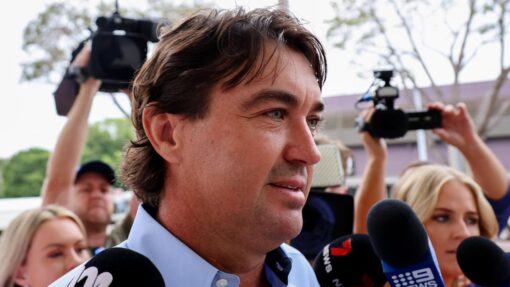‘Worst pressures’ of energy supply over
Dominic Giannini and Marion Rae |
The worst of the pressures on the energy grid have passed but significant strain still remains, Energy Minister Chris Bowen says.
Mr Bowen says the market regulator and operator has worked to avoid any blackouts or the need for load shedding.
“We believe we’re through the worst of the pressures on the energy system but the national energy market continues to function under pressure,” the minister said on Monday.
“But nevertheless, we are in a situation where more generation has come back on board.”
Mr Bowen says the government will work with the Energy Security Board on the proposed capacity mechanism to ensure energy reliability during the transition to renewables.
The board has recommended gas and coal-fired generators as an ongoing part of the energy mix, while renewable energy and storage gradually takes over the national electricity grid.
But underwriting coal and gas companies by including them in a proposed capacity mechanism will not impact the country’s transition to renewable energy, according to the board’s chair.
Prolonging the life of coal and gas fired power plants was not the intention of the board, Anna Collyer said.
“We have multiple principles, one of which is to ensure continued emissions reduction,” she told the ABC.
“So we want to make sure that can happen and part of that is getting the new assets into the system and getting the right mix of assets.”
Mr Bowen says the capacity mechanism is consistent with the emissions reduction trajectory as it supports the development and transition to renewables.
“It’ll complement our emissions reduction target, not contradict it,” he said.
“It’ll provide that underpinning (of power generators) so we can ensure the system remains reliable as we undertake this massive transformation.”
A separation of energy and capacity markets which has been employed overseas could also be employed before the mechanism evolves with changing circumstances into the future, according to the ESB chair.
Victorian Premier Daniel Andrews said all east coast states and territories that make up the National Energy Market had their own energy mix but would work towards renewable energy.
“The future is about renewables, whether it is wind or solar or battery storage, particularly when it’s firmed up and turned into baseload synchronous energy,” he said.
“At the same time, though, I’m the first to acknowledge the fact that coal and to a lesser extent gas at the moment right now and even … to 2025 are still part of our mix.”
Mr Andrews says while coal and gas companies continue to come to the Victorian government looking for help, the sector couldn’t be abandoned entirely despite lagging economic viability.
“I have these companies coming to me all the time. They can’t get finance for maintenance. We can’t have them run to the exits, though and leave us without the baseline we need,” he said.
“But the time has come to stop talking about transition and to get on and make it.”
Victorian Energy Minister Lily D’Ambrosio said: “We have always been clear that a capacity market operating in Victoria would make payments to zero-emissions technologies and not fossil fuels”.
NSW Energy Minister Matt Kean says the state needs to balance its investment in renewable energy for the future and keeping existing energy infrastructure running to provide power.
“We need to make sure that we’re modernising our electricity system,” he said.
“That’s why we’re working with the energy companies, the Australian energy market operator and with the Energy Security Board to make sure we manage this transition responsibly from old equipment to new.”
The post-2025 capacity mechanism plan has been released for industry input, with a July 25 deadline for submissions.
Energy ministers will meet on Friday to discuss the immediate energy crisis.
AAP


